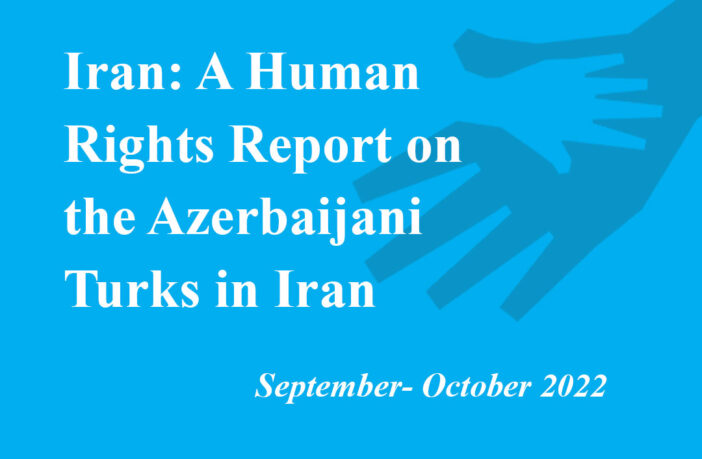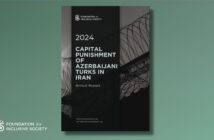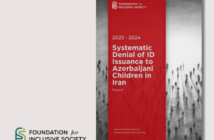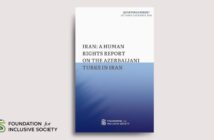Iran: A Human Rights Report on the Azerbaijani Turks in Iran
September- October 2022
This report has been prepared by the Azerbaijani human rights defenders regarding the latest status of the human rights violations of the Azerbaijani Turks in Iran by examining the 2022 Iran protests. The Azerbaijanis [ethnically Turks]are Iran’s largest ethnic minority, primarily residing in West Azerbaijan, East Azerbaijan, and Ardabil, which is bordered by Turkey and the Republic of Azerbaijan, alongside Zanjan, Qazvin, Hamadan, Alborz, and Tehran provinces.
The Iranian government has never released official demographic statistics for the country’s ethnic and linguistic groupings. However, during his official visit to Turkey in January of 2011, former Iranian Foreign Minister Ali Akbar Salehi declared that forty percent of Iranians speak Turkish.
“We speak almost the same language. Forty percent of Iranians speak Turkish. This is a big link between Turkey and Iran”.
The Azerbaijani Turks, alongside their ethnic relatives the Turkmens and the Qashgais, often claim a population share of close to 40%. After the rise of the Pahlavi dynasty to power in Iran in 1925, the government pursued forced assimilation policies. This led to a decline of Azerbaijani influence in the country’s government and politics significantly.
The Islamic regime, just as the previous monarchy in Iran, has downplayed and willfully ignored the differences between Persians and Azerbaijanis. The Islamic regime did not hesitate to crack down on the Azerbaijani Turk protestors throughout its history, using heavy weapons to crush uprisings such as the protests in Tabriz in 1981 that led to the murder of hundreds of Azerbaijanis.
Taking into consideration the systemic discrimination and racism that Azerbaijani Turks face, this report focuses on the arrested and murdered Azerbaijani Turk protestors since the beginning of the uprisings on September 16th, 2022 to maintain a balance in the discourse of reporting on recent human rights abuses by the government of Iran, as well as ensuring that the rights of Azerbaijani Turks, as a systematically discriminated group, are not left invisible.
The first part of this report presents a brief overview of the latest protests and provides a list of Azerbaijani Turk activists arrested and killed during these demonstrations.
The second part of this report mainly concentrates on the authors of the report and sources that have been used as reference in preparation.
The third part of this report explains the methodology used, the data collection process, and the formation of the framework.
Similar to other regions of Iran, people in the Azerbaijani-populated provinces began holding demonstrations demanding freedom alongside their other ethnic and religious rights. Authorities started to crack down upon Azerbaijani protests immediately. The next section of the report classifies the human rights violations in the Azerbaijan region. According to Sina Yousefi, the vice-chairman of the Human Rights Commission of the Azerbaijani Lawyers Association, the number of detainees only in Tabriz were more than 1700 protestors in the first two weeks of the protests alone. This number is difficult to estimate for the whole Azerbaijani region. However, we were able to confirm the identity of only 110 of the arrestees and 13 protestors who were killed during these demonstrations or as a result of physical abuse and torture by the various security forces in Iran.
Published information from the victims’ families, eyewitnesses, Azerbaijani human rights defenders inside Iran, and international human rights organizations confirms that the Iranian police and intelligence agents, together with the IRGC and Basij forces, have been using live ammunition and directly shooting at the protestors and civil bystanders. Still, the Iranian government has been denying the murders of these protestors. The next part of the report shows how the authorities treat the victims’ families to prevent investigating the cases of injured and dead protestors.




